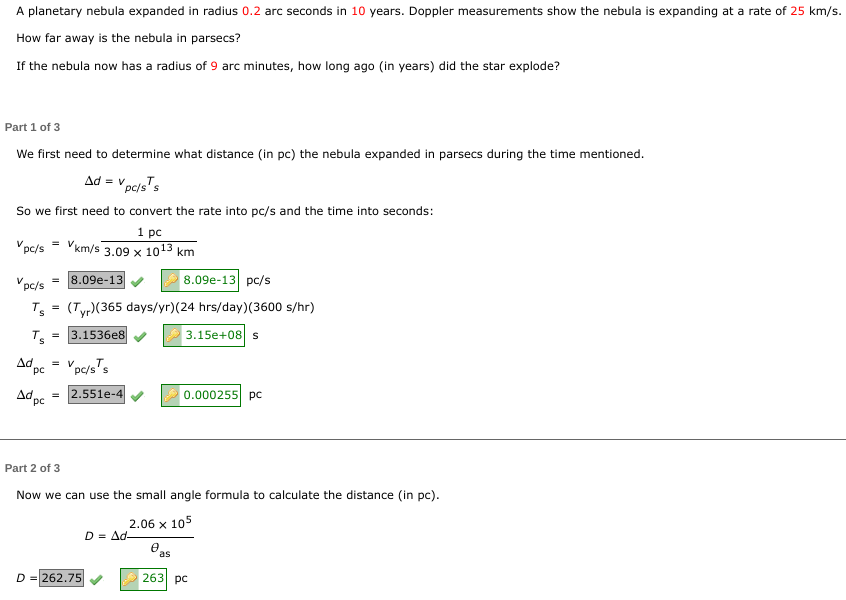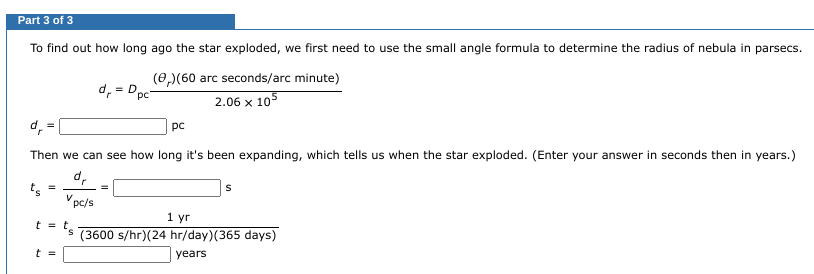A planetary nebula expanded in radius 0.2 arc seconds in 10 years. Doppler measurements show the nebula is expanding at a rate of 25 km/s. How far away is the nebula in parsecs? If the nebula now has a radius of 9 arc minutes, how long ago (in years) did the star explode? Part 1 of 3 We first need to determine what distance (in pc) the nebula expanded in parsecs during the time mentioned. Ad = V pc/s¹s So we first need to convert the rate into pc/s and the time into seconds: 1 pc Vpc/s = Vkm/s 3.09 x 10¹3 km 8.09e-13 pc/s (Tyr)(365 days/yr) (24 hrs/day)(3600 s/hr) 3.1536e8 3.15e+08 s pc/s = 8.09e-13 Ts Ts Ad = V pc Ad pc pc/s's = 2.551e-4 Part 2 of 3 Now we can use the small angle formula to calculate the distance (in pc). 2.06 x 105 D = 262.75 D = Ad- 0 0.000255 pc as 263 pc
Stellar evolution
We may see thousands of stars in the dark sky. Our universe consists of billions of stars. Stars may appear tiny to us but they are huge balls of gasses. Sun is a star of average size. Some stars are even a thousand times larger than the sun. The stars do not exist forever they have a certain lifetime. The life span of the sun is about 10 billion years. The star undergoes various changes during its lifetime, this process is called stellar evolution. The structure of the sun-like star is shown below.
Red Shift
It is an astronomical phenomenon. In this phenomenon, increase in wavelength with corresponding decrease in photon energy and frequency of radiation of light. It is the displacement of spectrum of any kind of astronomical object to the longer wavelengths (red) side.
Can you please help with Part 3 of 3?


Step by step
Solved in 2 steps with 2 images








